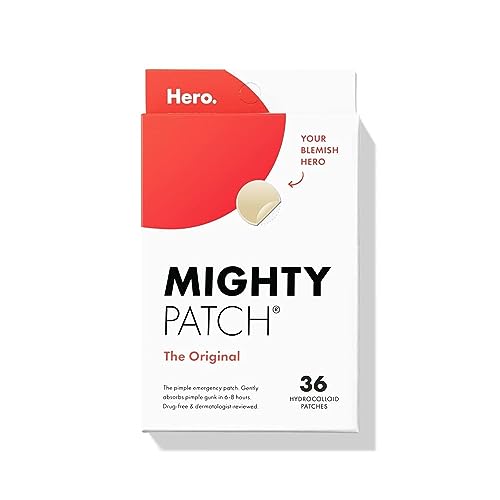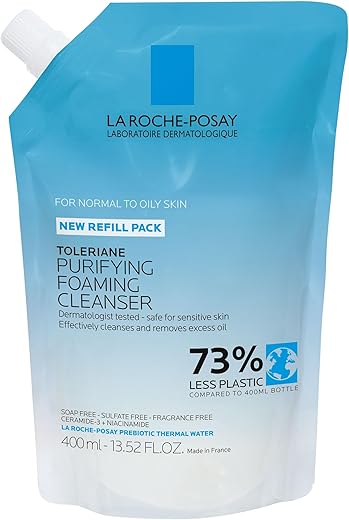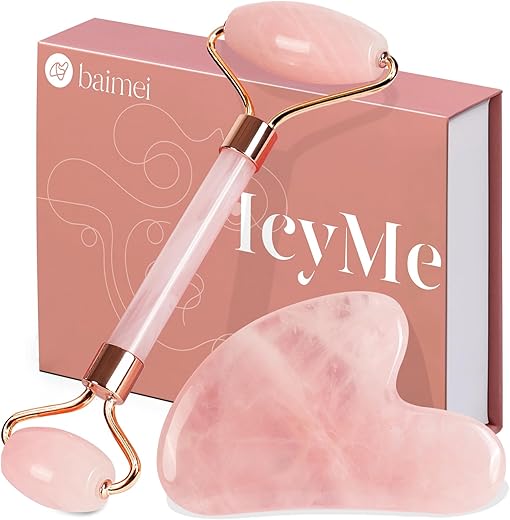
Debunking Common Myths about Face Spot Treatment
Are you tired of dealing with stubborn face spots that just won’t seem to go away? You’re not alone. Many of us have spent countless hours and dollars trying various treatments, only to be met with disappointment. But fear not, dear reader, for today we are here to debunk some common myths surrounding face spot treatment. Our goal is to provide you with accurate information and dispel any misconceptions, so you can finally achieve the clear and radiant skin you’ve always dreamed of. Say goodbye to frustration and hello to confidence as we navigate the world of face spot treatment together.
Top-rated Face Spot Treatments






Understanding Face Spot Treatment
Face spot treatment refers to the process of targeting and treating specific spots or blemishes on the face, such as acne, dark spots, or hyperpigmentation. This targeted approach allows individuals to address their unique skin concerns effectively. In this blog section, we will delve into what face spot treatment entails, why people seek it, and the common misconceptions and expectations associated with it.



What is Face Spot Treatment?
Face spot treatment involves using specialized products or procedures to treat specific areas of concern on the face, rather than treating the entire face. It allows individuals to focus on resolving particular issues while maintaining the overall health and appearance of their skin.
Why Do People Seek Face Spot Treatment?
There are various reasons why people seek face spot treatment, including:
- Targeted Solution: Face spot treatment offers a targeted solution for specific skin concerns, such as acne breakouts, dark spots, or redness. It allows individuals to address these issues directly without affecting the surrounding skin.
- Boosting Confidence: Skin blemishes can have a significant impact on one’s self-esteem. By seeking face spot treatment, individuals aim to improve the appearance of their skin and boost their confidence.
- Convenience: Treating the entire face may not always be necessary, especially when dealing with isolated spots or blemishes. Face spot treatment provides a convenient alternative that saves time and resources.
Common Misconceptions and Expectations
Misconception: Overnight Results
One common misconception about face spot treatment is expecting overnight results. While some products or procedures may provide instant improvements, most treatments require time and consistency to see significant changes. Patience is key when it comes to achieving desired results.
Misconception: One-Size-Fits-All Solution
Another misconception is that there is a universal face spot treatment that works for everyone. However, different individuals have unique skin types, concerns, and sensitivities. Therefore, it is essential to understand that what works for one person may not work for another. Customization and personalized approaches are vital in face spot treatment.
Expectation: Improved Skin Texture
One important expectation of face spot treatment is improved skin texture. Whether it’s reducing the appearance of acne scars or minimizing hyperpigmentation, the aim is to achieve smoother, more even-toned skin. Face spot treatments target specific concerns, helping to improve the overall texture and appearance of the skin.
Expectation: Long-Term Results
Face spot treatment aims to provide long-term results rather than short-term fixes. By addressing specific skin issues at their root, individuals can expect lasting improvements and reduced recurrence of blemishes or spots. Consistency and adherence to a skincare regimen are crucial for maintaining long-term results.
Key Points Summarized
To summarize the key points discussed:
- Face spot treatment targets specific spots or blemishes on the face.
- People seek face spot treatment for targeted solutions, confidence improvement, and convenience.
- Misconceptions include expecting overnight results and a one-size-fits-all solution.
- Expectations include improved skin texture and long-term results.
In conclusion, face spot treatment offers an effective and focused approach to address specific skin concerns. By understanding the misconceptions and having realistic expectations, individuals can make informed decisions about their skincare journey. Remember, consult with a skincare professional to determine the most suitable face spot treatment for your unique needs.
The Temptation of Quick Fixes
We’ve all been there — waking up with a sudden breakout or a pesky pimple right before a big event or an important day. In moments like these, the allure of face spot treatments promising overnight results can be hard to resist. But before you reach for that magical tube or bottle, let’s take a step back and examine the truth behind this common myth.

The Reality of Acne Treatment
Acne is a complex skin condition that occurs due to various factors, including excess oil production, clogged pores, bacteria, and inflammation. Treating acne effectively requires a comprehensive approach that addresses these underlying causes. While face spot treatments can play a role in acne management, they are far from the miracle cure they’re often touted to be.
Time and Consistency are Key
Acne is not a problem that can be solved overnight. It takes time and consistency to see significant improvements in your skin’s condition. Face spot treatments, when used as part of a well-rounded skincare routine, can help speed up the healing process and reduce the appearance of blemishes, but they are not a quick fix. Here are some key points to consider:
- Treatment Duration: Acne treatments typically require several weeks or even months to show noticeable results. It’s important to be patient and stick to a consistent routine, even when immediate results may not be visible.
- Targeting Underlying Causes: Face spot treatments primarily focus on reducing inflammation and drying out individual blemishes. While this can provide temporary relief, it’s crucial to address the root causes of acne to prevent future breakouts.
- Preventing New Breakouts: Acne is a recurring condition, and spot treatments alone cannot prevent new breakouts from occurring. A holistic approach that includes gentle cleansing, exfoliation, moisturization, and a healthy lifestyle will have a more lasting impact.
- Skin Type Considerations: It’s essential to choose face spot treatments that are suitable for your skin type. Not all products work the same for everyone, and using the wrong treatment can potentially worsen your skin’s condition.
The Power of a Comprehensive Skincare Routine
While face spot treatments may not work miracles overnight, they can still be valuable tools in your acne-fighting arsenal. To maximize their effectiveness and achieve clearer skin, it’s essential to adopt a comprehensive skincare routine that targets all aspects of acne management. Here are some steps to consider:
- Gentle Cleansing: Cleanse your face twice a day with a mild cleanser to remove excess oil, dirt, and bacteria without stripping your skin of its natural moisture.
- Exfoliation: Exfoliate regularly to unclog pores and remove dead skin cells. Be cautious not to overdo it, as excessive exfoliation can irritate your skin and worsen acne.
- Moisturization: Use a non-comedogenic moisturizer to keep your skin hydrated and balanced. Contrary to popular belief, moisturizing does not make acne worse; it actually helps maintain a healthy skin barrier.
- Spot Treatments: Incorporate face spot treatments into your routine to target individual blemishes. Look for ingredients like benzoyl peroxide, salicylic acid, or tea tree oil, which are known for their acne-fighting properties.
- Diet and Lifestyle: Maintain a balanced diet, drink plenty of water, manage stress levels, and get enough sleep. These factors can greatly impact your skin’s health and overall well-being.
Myth 2: Face Spot Treatment Works for All Skin Types
When it comes to skincare, there are countless products and treatments available that claim to work wonders for all skin types. However, one common myth that needs to be debunked is the idea that face spot treatment is universally effective for all skin types. In reality, different skin types may react differently to these treatments, making it crucial to understand the nuances of your own skin and seek professional advice when necessary.

Understanding Different Skin Types
Before diving into the details, it’s important to understand the different skin types and their characteristics. Here are the four main skin types:
- Normal Skin: This type of skin has a good balance of oil and moisture, with few imperfections and a smooth texture.
- Dry Skin: Dry skin often feels tight and may appear flaky or dull due to a lack of moisture.
- Oily Skin: Oily skin is characterized by excessive oil production, leading to a shiny complexion, enlarged pores, and a higher likelihood of breakouts.
- Combination Skin: This skin type is a combination of both oily and dry areas, with the T-zone (forehead, nose, and chin) being oilier and the cheeks and other areas being drier.
The Truth About Face Spot Treatment
Now that we understand the different skin types, it’s important to address the myth that face spot treatment works universally for all skin types. While it’s true that these treatments can be effective for certain skin concerns like acne, hyperpigmentation, or dark spots, the results can vary depending on your skin type. Here’s why:
- Ingredients: Different spot treatments contain various active ingredients that work in different ways. For example, some treatments may contain drying agents like benzoyl peroxide, which can be effective for oily or acne-prone skin but may cause excessive dryness or irritation for those with dry or sensitive skin. On the other hand, treatments with gentle exfoliants like alpha-hydroxy acids (AHAs) or salicylic acid can work well for all skin types without causing excessive dryness.
- Sensitivity: Some skin types are naturally more sensitive and prone to irritation than others. Harsh spot treatments or ingredients can aggravate sensitive skin, leading to redness, itching, or even allergic reactions. It’s important to consider your skin’s sensitivity level when choosing a spot treatment.
- Underlying Skin Conditions: Certain skin conditions, such as rosacea or eczema, require specific treatment plans tailored to the individual. Using a spot treatment that is not suitable for your specific condition may worsen the issue or trigger flare-ups.
The Importance of Consulting a Dermatologist
With so many factors to consider, it’s clear that one-size-fits-all spot treatments may not be the best solution for everyone. This is why consulting a dermatologist is essential for achieving optimal results and maintaining the health of your skin. Here are some reasons why seeking professional advice is beneficial:
- Expertise: Dermatologists have in-depth knowledge and expertise in assessing different skin types and conditions. They can provide personalized recommendations based on your specific needs.
- Customized Treatment Plans: A dermatologist can tailor a treatment plan that addresses your unique skin concerns, taking into account your skin type, sensitivity, and any underlying conditions.
- Professional-grade Products: Dermatologists have access to a wide range of professional-grade products that may not be available over-the-counter. These products are often formulated with higher concentrations of active ingredients and are more effective in treating specific skin issues.
In conclusion, while face spot treatments can be effective for certain skin concerns, it’s important to understand that different skin types may react differently to these treatments. Consulting a dermatologist is crucial to determine the most suitable treatment plan for your skin type and to ensure optimal results without any adverse reactions. Remember, your skin deserves the best care tailored to its unique needs.
Myth 3: Natural Remedies are as Effective as Commercial Products
When it comes to treating face spots, many people turn to natural remedies as an alternative to commercial products. However, it is important to understand the differences between these two options and consider the effectiveness of each. In this blog section, we will delve into the debate of natural remedies versus commercial products for face spot treatment and highlight the importance of evidence-based ingredients.



Natural Remedies: A Popular Choice
Natural remedies have gained popularity in recent years as people seek more holistic and organic solutions for their skincare concerns. These remedies often rely on ingredients sourced from nature, such as plant extracts and essential oils. While they may appear appealing due to their perceived naturalness, it is crucial to examine their effectiveness compared to commercial products.
Commercial Products: The Science-backed Approach
Commercial products, on the other hand, are formulated using scientific research and data-driven approaches. They often contain specific active ingredients that have been proven to target and treat various skin issues, including face spots. These products undergo rigorous testing and quality control measures to ensure their safety and effectiveness.
The Difference in Ingredients
One of the key differences between natural remedies and commercial products lies in the ingredients used. Let’s take a closer look at the significance of evidence-based ingredients:
Natural Remedies
- Natural remedies often rely on anecdotal evidence and traditional knowledge rather than scientific research.
- While some natural ingredients may have beneficial properties, their effectiveness in treating face spots may vary and lack scientific evidence.
- It is important to note that natural does not necessarily mean safe, as some natural ingredients can cause skin irritation or allergic reactions.
Commercial Products
- Commercial products for face spot treatment contain ingredients that have undergone extensive research and testing.
- These products often include active ingredients such as retinol, salicylic acid, and benzoyl peroxide, which have been scientifically proven to target face spots.
- The concentration of these active ingredients is carefully formulated to ensure optimal efficacy with minimal side effects.
The Importance of Evidence-based Ingredients
Evidence-based ingredients play a crucial role in determining the effectiveness of face spot treatments. Here’s why they matter:
- Proven Efficacy: Ingredients backed by scientific research are more likely to deliver consistent and significant results in treating face spots.
- Safety: Commercial products undergo rigorous safety testing, ensuring that the ingredients used are safe for the skin and do not cause adverse reactions.
- Targeted Treatment: Evidence-based ingredients are specifically chosen for their ability to target and address the underlying causes of face spots, leading to more effective and long-lasting results.
- Quality Control: Commercial products adhere to strict quality control measures, ensuring that the ingredients used are of high quality and potency.
Dispelling Misconceptions and Setting the Record Straight
In conclusion, this blog post has successfully debunked common myths surrounding face spot treatment. We have learned that contrary to popular belief, spot treatments do not work overnight miracles and cannot completely eliminate all types of facial spots. However, they can be effective in reducing the appearance of certain spots over time. It is important to consider factors such as the type of spot, underlying causes, and individual skin type before choosing a treatment. Consulting with a dermatologist is recommended for personalized advice and guidance. Ultimately, a holistic approach that includes a consistent skincare routine, proper hydration, and a healthy lifestyle will yield the best results in achieving clear and radiant skin.

Hey, I’m Ava Wilson—a skincare enthusiast and a certified esthetician. I’m dedicated to sharing my knowledge and empowering others to achieve healthy, glowing skin through simple, effective routines and natural remedies. Join me on this exciting skincare journey, and let’s unlock your skin’s potential for a confident, beautiful you.





